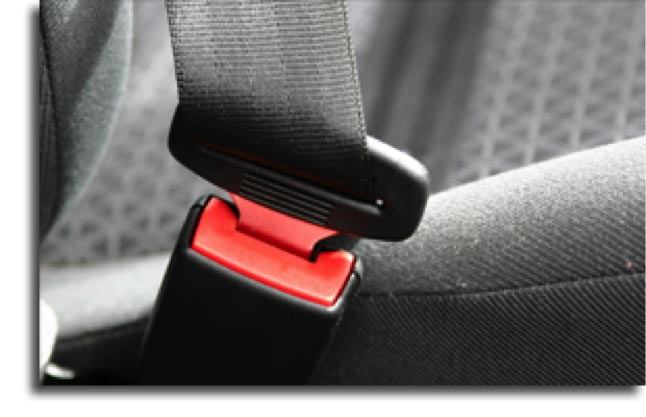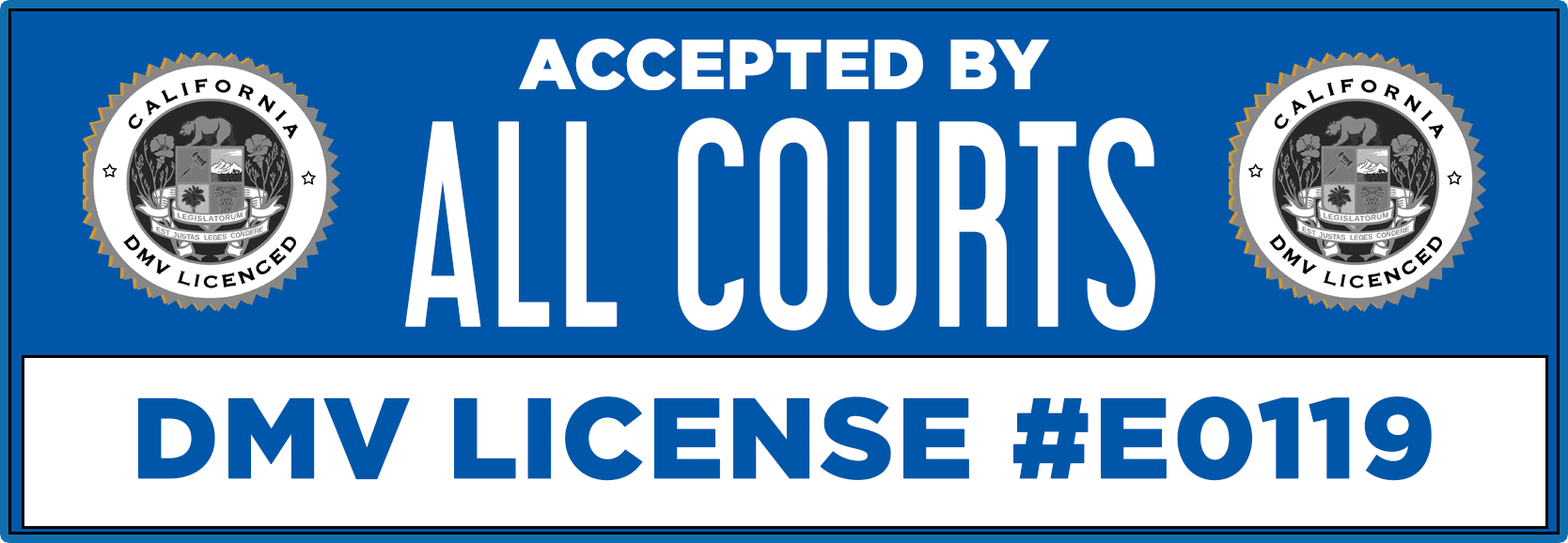The Truth About Safety Belts and Child Car Seats

Allows penalty assessments and court costs to be added to maximum $20 or $50 fine imposed on first and subsequent seat belt violations, this raising the maximum amount of the fine that may be imposed.
The use of your safety belt is required by law if your vehicle is a (an):
- 1968 or later model car
- Housecar
- Enclosed 3-wheel vehicle (not less than 7×4 feet) with an unladen weight of 900 pounds or more)
- Truck tractor (excludes passenger in sleeper berth).
The safety belt must be in good working order. If it is damaged or not working properly, it needs to be replaced. You and your passengers must wear a safety belt while the car is moving. If not, you or your passenger (age 16 or older) may be given a traffic ticket for not wearing a safety belt.
In fact, a seat belt is required for each person in the vehicle. A child who is under the age of eight years of age or at least 4 feet 9 inches in height must be put in a child safety seat in the rear seat of the vehicle. If a child is 8 years of age or younger, the driver, parents, or legal guardian, if present, must put the child in the rear seat, in an approved child safety seat.
A change to California’s Child Passenger Safety Seat law now requires children to ride in a car seat until the age of eight, or until they reach a height of 4 feet 9 inches. This law also requires children who do not meet the age or height requirement to ride in the rear seat of a vehicle unless the vehicle has no back seats, the restraint system cannot be properly installed or the rear seats are already occupied by children under age eight. However, the law still maintains that a child may not ride in the front seat of a vehicle with an active passenger airbag if they are under one year of age, less than 20 pounds, or riding in a rear-facing child safety seat.
Here are some additional tips for using a child safety seat:
- The back seat is generally the safest place in the car for all children 12 years of age or younger.
- Babies up to 20 lbs. and about age one shall ride in a safety seat secured to the back seat facing the rear of the car. Babies should not be placed forward or backward in the front passenger seat if the vehicle has a passenger-side air bag.
- Children over 20 lbs. and about age one or older shall ride buckled up in the back seat.
- Make sure the vehicle’s seat belt is put through the correct slot in the safety seat. Incorrectly fastened safety seats defeat their purpose and can result in injury.
Safety belts can reduce injuries and deaths. Many studies and actual crash tests have proven this. Crash tests have also reinforced the proper way for pregnant women to wear lap and shoulder belts. Wear the lap belt as low as possible under the abdomen and the shoulder strap between the breasts and to the side of the abdomen’s bulge.
If you wear only a lap belt when driving, your chances of living through a collision are twice as good as those of someone who isn’t. If you wear a lap and shoulder belt, your chances are three to four times better. You must wear both your lap and shoulder belt if the vehicle is equipped with both and if the vehicle is equipped with air bags.
WARNING: The use of seat belts reduces the chance of being thrown from your vehicle in case of a collision. If you don’t install and use a shoulder harness with the lap belt, serious or fatal injuries may happen in some crashes. Lap-only belts increase the chance of spinal column and abdominal injuries especially in children. Shoulder harnesses may be available for your vehicle, if it is not already equipped with them.
A child safety seat is required for children who are under eight years old or under 4’9” in height. The driver, parent, or legal guardian, if present, must put the child in an approved safety seat in the rear seat of the vehicle if the child is under eight years of age or under 4’9” tall. Don’t put a rear-facing restraint in the front seat. Starting with the first trip home from the hospital, put an infant in the center back seat. Make sure the rear-facing restraint is tightly secured to the vehicle with an adult safety belt and the baby is buckled snugly in. If there’s no choice but to put a baby in the front seat, then an on/off switch for the passenger airbag is essential. But before you do this, remember the back seat is safer.
Even without airbags, kids riding in back are much less likely to be killed. When babies outgrow their rear-facing restraints, they should graduate to forward-facing ones or booster seats attached to a vehicle’s back seat with an adult safety belt. As kids later graduate to adult belts, proper restraint use still is essential. Don’t put the shoulder portion of a belt behind a child or under the arm and don’t let a youngster do this either because it compromises protection. A lap belt should be positioned so it’s low and snug across a child’s hips, not up over the abdomen.
Older kids should continue riding in a back seat. Only if there are too many children to put them all in back should a child be allowed to ride up front. Then make sure the seat is all the way back. Leaning forward, for example, to fiddle with radio dials can put a child at risk. If you worry about keeping a child sitting back, you may wish to consider getting an on/off switch for the passenger airbag.
NOT ALL child seats can be installed in all vehicles and all seating positions. With numerous models of child seats, almost 300 models of passenger vehicles, and the wide range of belt systems available today, correctly installing a child seat can be challenging. The best way to be sure your child seat is compatible with the vehicle you are considering is to test it before you purchase or lease the vehicle.
Be sure to read the child seat’s instruction manual and review all information in the vehicle owner’s manual concerning correct installation. Once the seat is installed, check it by firmly pulling the base of the child seat from side to side and forward. The child seat should not move more than one inch in any direction.
Kaitlyn’s Law: The purpose of this law is to help prevent injuries to, and the death of, young children from the effects of being left alone in a mo/tor vehicle. This law states that a parent or legal guardian cannot leave a child under the age of 6 years old or younger inside a motor vehicle without supervision of a person who is 12 years of age or older under certain conditions. These conditions are if there is a significant risk to the child’s safety and health or when the vehicle’s engine is running or the keys are in the ignition. This is punishable by a fine of $100.00.
Amendment to California Vehicle Code section 21212: As of January 2003 California law requires all persons under 18 years of age to wear a properly-fitted and fastened bicycle helmet while operating a bicycle or riding upon a bicycle as a passenger, operating a non-motorized scooter or skateboard, wearing in-line or roller skates, or while riding upon a non-motorized scooter or skateboard as a passenger.
Child Safety Restraints- Amendment to CVC 27360 Requires that a child who is required to be secured in a child safety seat (Under 8 years of age), be secured in the rear seat of the vehicle. A child is allowed to be properly secured in child safety seat in the front seat of the vehicle if:
- There is no rear seat
- The rear seats are side facing jump seats
- The rear seats are rear-facing seats
- The restraint system cannot be installed properly in the rear seat
- All rear seats are occupied by children under the age of 7 years
- Medical reasons necessitate that the child not ride in the rear
A child may not ride in the front seat of a motor vehicle with an active passenger air bag if they are under one year of age, weigh less than 20 pounds, or riding in a rear-facing child passenger restraint system.
Vehicle Code Section 12814.6 and Health and Safety Code 118947 This bill makes it an infraction for a person to smoke a cigarette, pipe, or cigar in a motor vehicle when a minor is present in the vehicle. The law applies whether the vehicle is at rest or in motion, is secondary enforcement and punishable by a fine not exceeding $100.
Health and Safety Code 118947 This act shall be known, and may be cited, as the Marco Firebaugh Memorial Children’s Health and Safety Act of 2007.
Section 118948 of the Health and Safety Code:
- It is unlawful for a person to smoke a pipe, cigar, or cigarette in a motor vehicle whether in motion or at rest, in which there is a minor.
- For the purposes of this section, “to smoke” means to have in one’s immediate possession a lighted pipe, cigar, or cigarette containing tobacco or any other plant.
- A violation of this section is an infraction punishable by a fine not exceeding one hundred dollars ($100) for each violation.
Section 118949 A law enforcement officer shall not stop a vehicle for the sole purpose of determining whether the driver is in violation of this article.
When you enroll in a traffic school program, you will learn about the topics mentioned above and more. A motor vehicle can be a safe mode of transportation, or it can be a very dangerous weapon. If you want to learn how to increase the chances of making it to your destination in one piece, complete our traffic school online today. The program is ComedyTrafficSchool.com. Take online traffic school the fun way with our award winning course. Our traffic school course is the perfect choice for anyone who recently received a traffic ticket; keep points masked from your driving record, your auto insurance rates low and become a better, safer driver!





